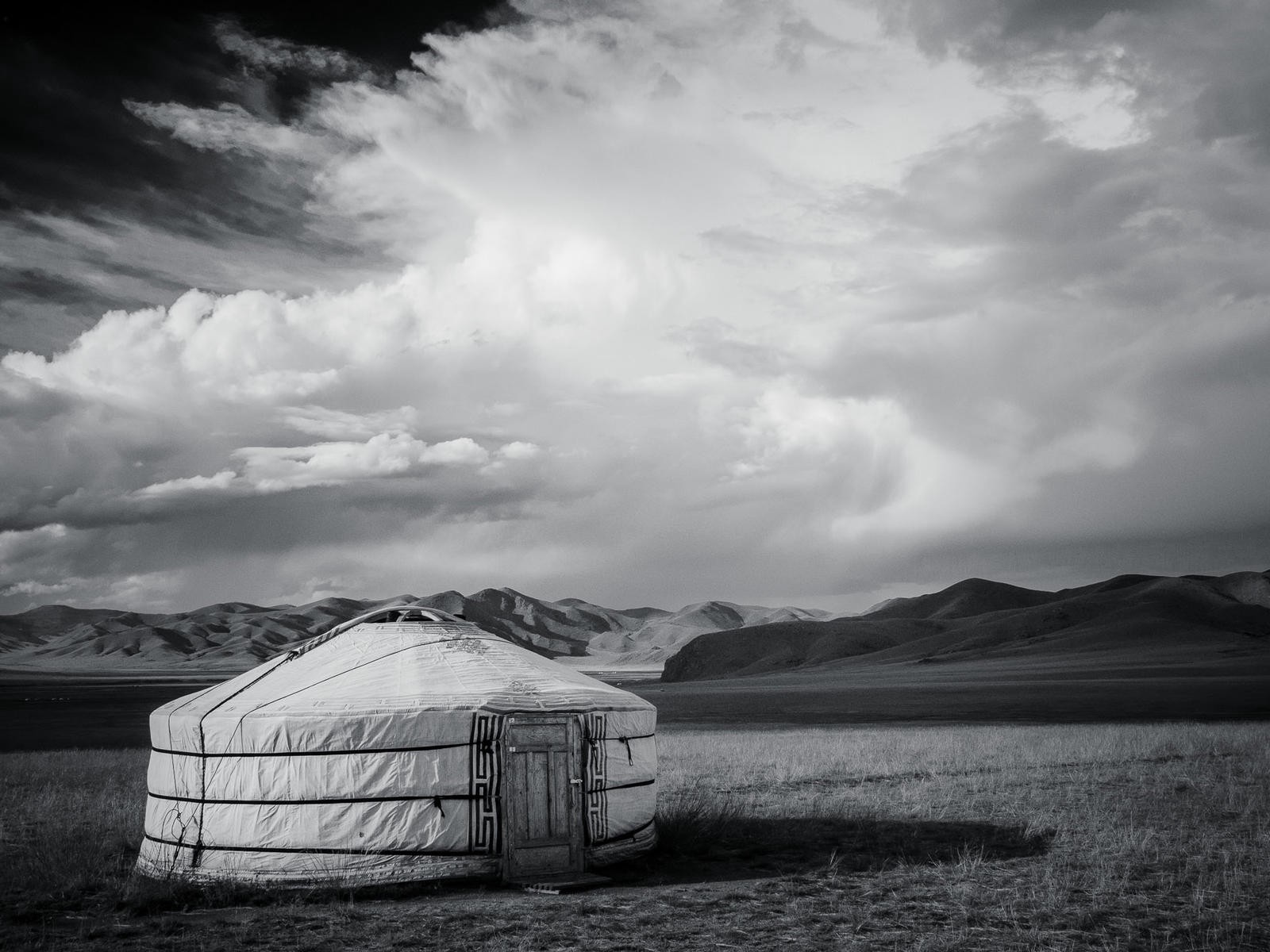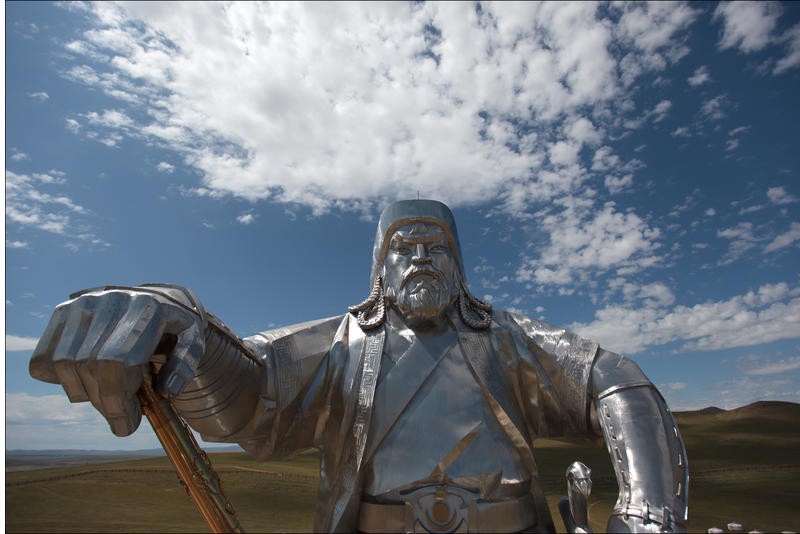

Genghis Khan may have conquered most of China and Central Asia–the largest contiguous empire in history–but his influence extends much further. Besides uniting warring Mongol tribes, he established an alphabet, installed a currency and encouraged a system of meritocracy and religious tolerance. In fact, Genghis Khan’s prolific legacy is embedded into our very DNA; given the unusual prevalence of certain genetic markers, 16 million people today could be his living descendants. It should be no surprise then that even in death this one man continues to shape our science, society and future.
Our mystery begins nearly 800 years ago with Genghis Khan’s burial in 1227. Since then, centuries of legends have obscured the location of his tomb. One story claims that his funeral escort killed everyone who witnessed the burial. Another suggests that an entire forest was planted and the river redirected over his grave to keep it hidden. Although his burial site remains a secret, it is more urgent than ever to find and preserve his tomb as a historic landmark.
While grave robbing has been a problem since ancient times, today the rise in mining activity also threatens the conservation of Mongolia’s cultural history. Rich in natural resources, Mongolia’s vast countryside is fast transforming, increasingly marred by mining efforts that cut into the landscape. However controversial, this industry has become critical to the economy. In fact, within the next few years, a single copper-and-gold mine in Oyu Tolgoi is poised to account for a third of Mongolia’s GDP. In addition to the large corporations, nearly 20 percent of the country’s rural workforce–that’s 100,000 people–works as independent or unlicensed miners, many of whom recover gold from abandoned open-pit mines and shafts. In spite of the many changes facing Mongolia, there persists a strong desire and cultural imperative to protect its historical legacy, which includes the long-revered, hidden tomb of Genghis Khan.
This is where Albert Lin, a National Geographic Emerging Explorer, enters the scene. Often lauded as a “modern day Indiana Jones,” Lin uses satellite imagery (among other non-invasive technologies) to digitally survey the sacred mountain region where Genghis Khan’s grave is rumored to be. With more than 2,315 square miles of land to cover, this is certainly faster than exploring by foot but still not a trivial task.

To aid his exploration, Lin leveraged the power of crowdsourcing. Since launching, the Valley of the Khans Project has attracted almost 200,000 online volunteers to sift through nearly 1 million satellite images. Together, they’ve annotated 2.3 million points of interest, including possible burial mounds and other anomalous features. Of course, there’s room for error with this kind of analysis. In a 2010 TedX Talk, Lin joked that sometimes what looks like an ancient structure from above might just be a flock of sheep. But with a computer algorithm that identifies areas of high consensus (and thus confidence), Lin and his collaborators have traveled directly to the most promising locations.
Several field expeditions later, he and his colleagues (thanks to their army of volunteers) reported some of their findings in a recent publication. Altogether, the online community collectively contributed 30,000 man hours–that’s 3.4 years. When paired with real-time exploration of the sacred Khentii mountains, this approach allowed Lin and his team to find 55 archaeological sites, including burial mounds that date from the Bronze Age through the Mongol period.
In an interview, Lin admitted that this paper describes their methods more than their discoveries. Their complete results were first reported to the Mongolian government, and by request, held unpublished for several years to protect the findings. As Lin described, “For Mongolians, their sense of heritage is extremely strong and this forbidden zone [where Genghis Khan is presumably buried] is held with extreme reverence. It’s like a living temple, so to speak, for the founder of their nation [and in a way, the] father of their identity.”
Rightly so, the preservation of any potential tombs should be of utmost importance. This is especially true in Mongolia, as historian Dr. Daniel Waugh cautioned. Although he’s not involved with Lin’s group, Waugh (a professor emeritus at University of Washington) is no stranger to archaeological expeditions. He pointed to past Mongolian excavations, whose findings and locations became public record and were plundered shortly thereafter.
According to Lin, Mongolia’s Minister of Culture is currently trying to establish the sacred mountain as a World Heritage Site, presenting Lin’s findings in the appeal to UNESCO. When asked about future steps, Lin responded, “If anything, it would have to come from the Mongolian government and people.”
So for now, Genghis Khan’s final resting place remains a mystery. Regardless, even without a conclusive answer, this quest for an unmarked grave (while foremost about understanding and preserving our shared cultural heritage) has also changed the way we approach problem-solving.
By combining massive data sets with an unprecedented crowdsourcing campaign, this work doesn’t just show how the Internet can harness large-scale manpower–it demonstrates how to educate and inspire global communities to action. In the past year, online volunteers have sifted through satellite imagery, contributing to causes like mapping wildfires in Indonesia and monitoring poachers in Africa. Originally founded by Lin and his friends, this project is called Tomnod (Mongolian for “Big Eye”) and has even helped investigate the missing Malaysia Airlines Flight 370: In one weekend, millions of people immediately joined the online search, and began scouring the ocean for airplane wreckage. For him, Lin said this was “the major a-ha moment. [To] channel [the] focused, productive effort of 8 million people in a single weekend, that’s unbelievable! That’s a whole new way of thinking about the human experience. [It’s] building this larger, connected network of us.”
It’s clear that the entire citizen science movement expands what we can accomplish as a community. But more broadly, it engages the public and redefines what it means to be an explorer or scientist. Whether it’s cataloging bird sightings or predicting protein-folding patterns, involving the general public in research makes science more approachable, tangible and exciting. And that’s a win for everyone.


How We Get To Next was a magazine that explored the future of science, technology, and culture from 2014 to 2019. This article is part of our Histories of”¦ section, which looks at stories of innovation from the past. Click the logo to read more.
